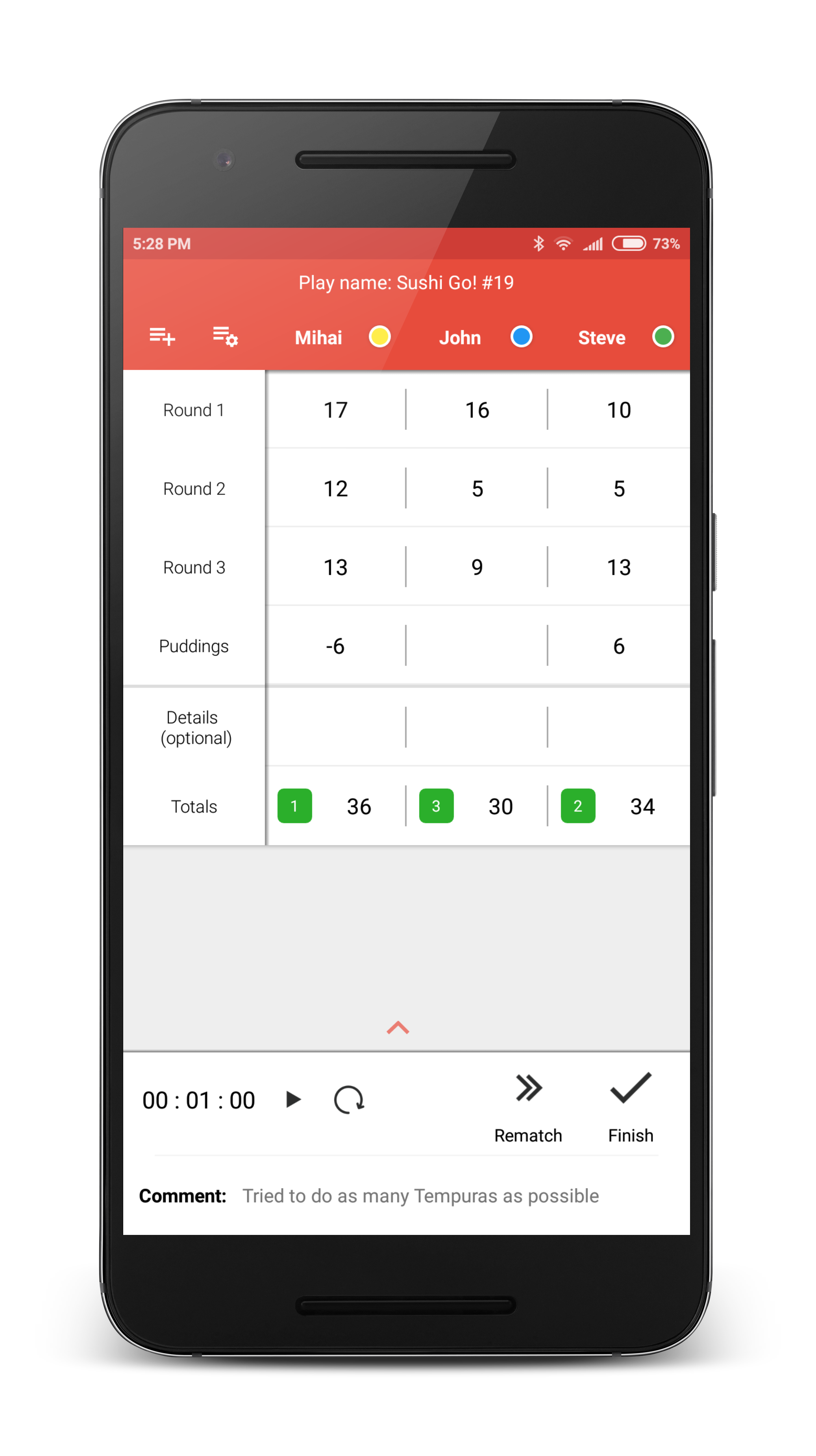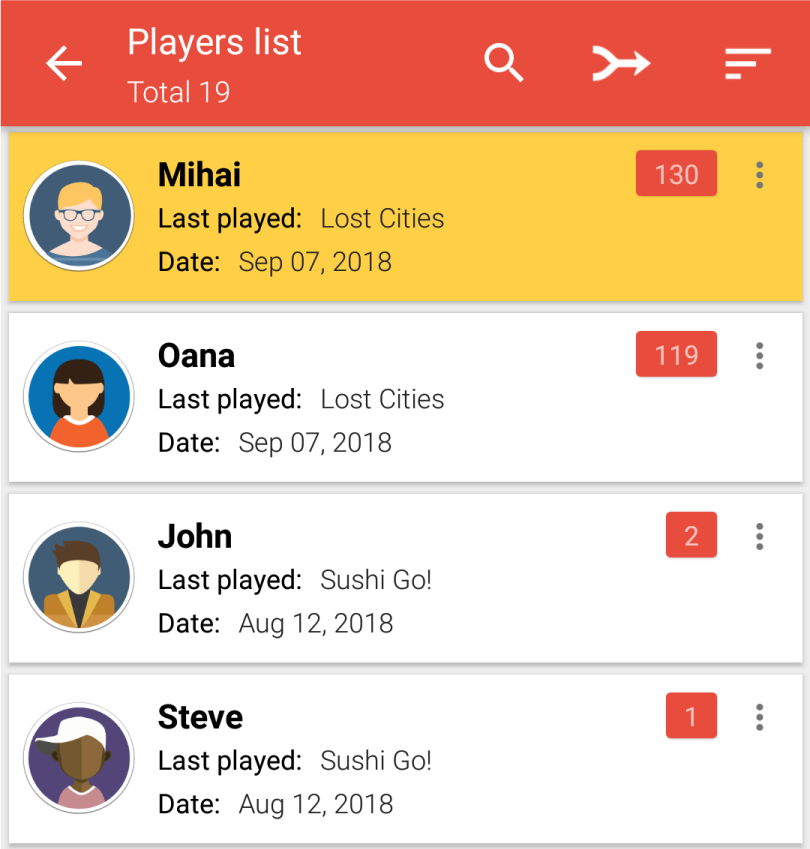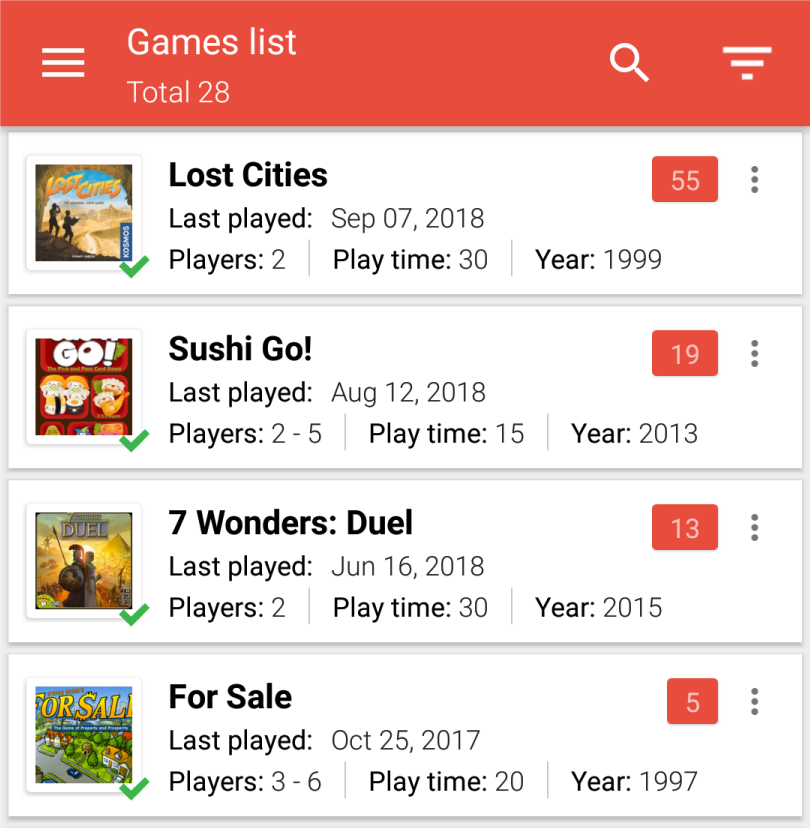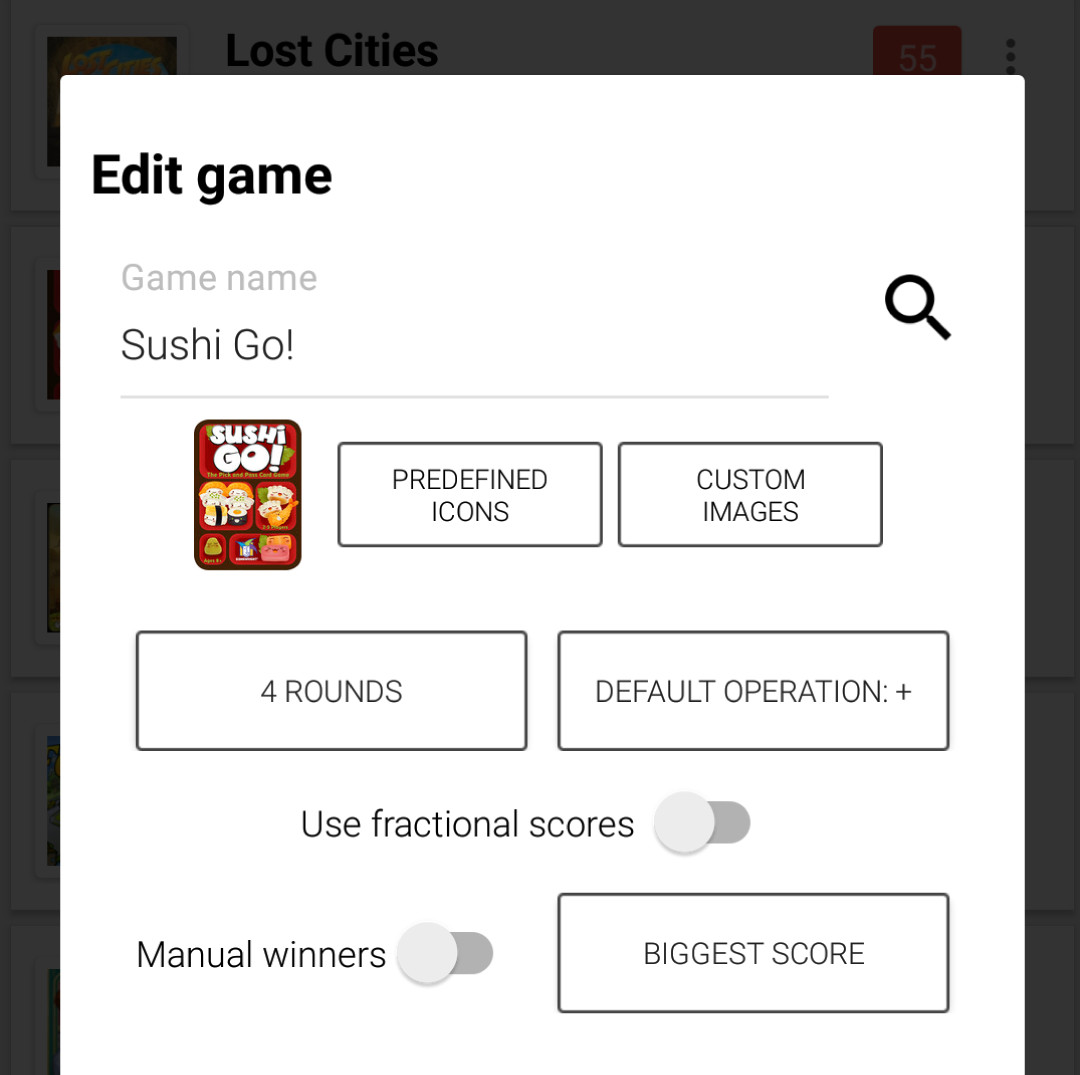The app let’s you manage a list of players that will be involved in all future plays. You can mark a player as the default one and the app will automatically add him/her to all future plays. Similarly, there is a screen for managing your games list. A game‘s config can be divided into 2 sections:
- the game’s config: name and icon, etc.
- the game’s template: scoring rounds, winning condition(is it better to have a bigger or lower score?), etc.
A scoring round will be represented by a row in the scoring table (first image). These define the scoring criteria (ex. “Points from blue cards”, “Money “, “Penalties” etc.), and they generate each players final score.
With the game config out the way lets see how all game resources tie up. A game contains a list of plays. A play contains a list of players, and a scoring table. The scoring table contains a list of rows(one for each scoring round) and a list of columns (one for each participating player)




